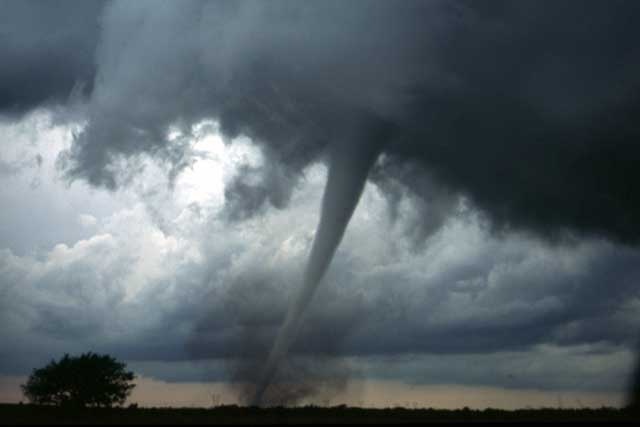
"When an extreme weather event happens, the public wants to know—is this climate change?" That statement by Lawrence Berkeley Lab's Michael Wehner provided a good background for the session on climate change and unusual weather events that happened at the meeting of the American Association for the Advancement of Science. The fact is, scientists aren't well equipped to answer that question—at least not in a way the public's likely to find satisfying.
Instead, Wehner said, science is on solid ground when it examines weather events in terms of probabilities: is the risk of a given event higher? Will the magnitude of a given type of event change?
Wehner went through some historic events and examined how climate change shifted these probabilities. For example, events similar to Europe's 2003 heat wave (which saw 70,000 deaths) are already twice as likely to occur given the amount we've warmed over pre-industrial conditions. If we allow the globe to warm by 2°C over preindustrial levels, that probability goes up to 154 times. "By the end of the century," Wehner said, "when we're likely to see 4°C warming, this event will likely seem cold."
Similar things were possible to say about the 2010 Russian heatwave (2-3 times more likely now, 5-8 times more likely at 2°C of warming) and the 2011 Texas drought (slightly elevated probability now, but up to 10 times more likely at 2°C). None of this is to say that climate change has caused any of these events; they occasionally appear in climate model runs without any added greenhouse gasses. It simply tilts the odds in their favor.
And these are events where the probabilities are relatively simple. Wehner said that, in a 2°C warmer world, climate models indicate we'll see an 18 percent drop in the total number of hurricanes that form, but the number of Category 4 and 5 storms will go up by 17 percent.
This sort of complexit statistical change was also seen by NOAA's Harold Brooks, who studies severe thunderstorms and tornadoes (winds above 50 knots and hail of an inch or more define these storms). As recently as the IPCC's 5th Assessment Report, Brooks said there was little to be said about this sort of extreme weather, but papers have started to come out since that are changing that.
In a number of cities, the frequency of precipitation has been unchanged even as temperatures rise, but the number of days with heavy rains is going up. In Oklahoma city, for example, the chance of a rainstorm exceeding an inch of rain has gone from 10-15 percent 20 years ago to over 25 percent now. Similar things have happened with tornadoes. Although there's no overall trend in these events, they're now coming in bunches; the records for months with both the most and fewest tornadoes have all been set recently.
Looked at another way, the number of days with tornadoes has dropped from about 150 to 100, but days with more than 30 have gone from essentially zero to to 60. The timing of tornado season is also off. The peak of the season has shifted two weeks earlier over the last 40 years, and four of the five earliest and latest starts to the season are all within the last 17 years. Overall, Brooks painted a picture where things are changing, but not in any obvious direction. And besides, as he put it, "If I get my house destroyed in a tornado, does it matter to me if there was only one that day?"
Claudia Tebaldi of UCAR managed to cover the one area where things aren't really subject to such complications: sea level rise. By 2050, Tebaldi said, the oceans will clearly be higher, providing every storm with an elevated launching pad to cause flooding. In the Battery of New York City, for example, this will mean a 100-year flooding event will come along every 15 years. And she performed a similar analysis for the entire US coast, where flooding can range from one meter up to four or five in areas on the common hurricane pathways.
In some places, she said, a 100-year flood will remain rare, but in others it will become an annual event. (The results of her analysis are posted on Climate Central). Most striking were the results from Florida, where most of the southern portion of the state will end up under water every other year.
The session was also notable for what was a rather public dispute between the organizer Michael Mann (of hockey stick fame) and Wehner, who disagree over the influence of climate change on California's recent drought. Wehner said "I don't like to make attribution statements based on statistics alone" (though he added "though I do love statistics" with a chuckle), while Mann argues that the high temperatures driven by climate change has helped deplete the state of groundwater. Still, Mann highlighted the disagreement as a case of a real scientific controversy, as opposed to the the manufactured sorts that the public often gets exposed to.
But Wehner wasn't adverse to making concrete statements. He noted that, if we reach a 4°C rise, the rare hot days will be up to 9°C warmer—"that's nearly 20°F." "For me, 2°C warming is very unsafe—dangerous climate change is here now," he told the audience. "Adaptation should be underway, and it's a disservice to the public not to admit to that."
No comments:
Post a Comment